Contact us at:
Ramgarhia Gurdwara,720 Bolton Road,
Bradford,
BD3 0ND,
England
Tel: (+44) 01274 400694
The Sikh Gurus
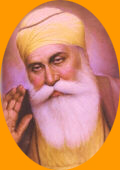 |
1. GURU NANAK DEV JI (1469-1539) The founder of Sikh Dharam was born in Talwandi, now named after him as Nankana (in present - day Pakistan). He was a calm, meditative child who preferred the company of itinerant holy men to that of his schoolmates. He was born into a Hindu family and a Muslim called Rai Bular perceived the God - inspired soul in Nanak. His own genius and the spiritual illumination that came from his long spells of meditation shaped the creed,which became the foundation of the Sikh religion. He travelled widely in India, Afghanistan, Sri Lanka, Iran and Arabia. He chose a devoted disciple to take his place as spiritual leader. |
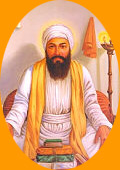 |
2. GURU ANGAD DEV JI (1504-1552) Was the spiritual successor to Guru Nanak. His first name was Bhai Lehna Ji, and having come into contact with Guru Nanak he became his disciple. He helped to strengthen the new Sikh institutions and introduced "Gurmukhi" ( came from Gurus mouth) script to be used to write holy hymns. |
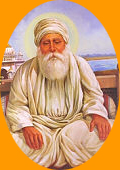 |
3. GURU AMAR DASS JI (1479-1574) was chosen as the 3rd Guru at the age of seventy three, having served Guru Angad for eleven years. He stood against the caste system, forbade the ceremony of "Sati", gave women equal status, stopped the custom of "pardha" (covering of face by women) and introduced "Pangat" eating "Langar" (free kitchen) together sitting on the floor at the same level to represent equality . |
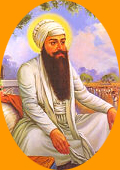 |
4. GURU RAM DASS JI(1534-1581) The young son-in-law of Guru Amar Dass, founded the city of Amritsar(Pool Of Nectar) and gave free assistance and land to enable the poor to settle in Amritsar Also created a large area for langar along with "Ramdass Sraan" a place for travellers to stop overnight. |
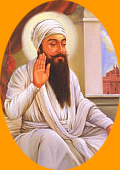 |
5.GURU ARJAN DEV JI (1563-1606) The youngest son of Guru Ram Dass compiled the first holy Scriptures (named ADI GRANTH which was later revised by Guru Gobind Singh the tenth Guru). Guru Arjan constructed "Harmander Sahib" meaning "divine residence of God" and now known as the Golden Temple. He became the first martyr Guru laying down his life to uphold the principles of freedom of speech and freedom of worship. |
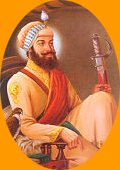 |
6. GURU HARGOBIND JI (1595-1644) The son of Guru Arjan, Guru Hargobind took a cue from the troubled times. At thirteen, he built the "Akal Takhat" (or raised platform) and maintained an army. He carried two swords representing temporal and spiritual freedom. He taught Sikhs to defend their faith. |
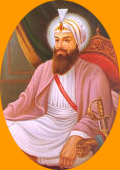 |
7. GURU HARRAI JI (1630-1661) He became Guru at the age of fifteen. He was the grandson of Guru Har Gobind and was fond of serving others. This service secured him many followers. He also started free medical clinics so that the less fortunate would have good medical care. |
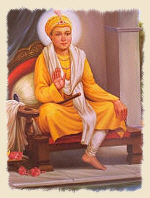 |
8. GURU HARKRISHAN JI (1656-1664) He became Guru at the tender age of five and is known as the child Guru. He baffled many scholars with his spiritual powers and knowledge. Before his death at the age of eight he declared the next Guru would be found in the villageof Bakale |
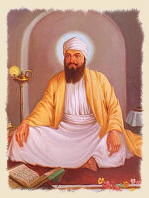
|
9.GURU TEG BAHADUR JI (1621-1675) He was the youngest son of Guru Hargobind and came from Bakale. He was beheaded by Emperor Aurangzeb for upholding the principle of freedom of conscience and freedom of speech. |
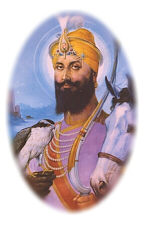
|
10. GURU GOBIND SINGH JI (1666-1708) The son of Guru Teg Bhadur, took the Guruship at the age of nine. He was a scholar of Gurmukhi, Sanskrit and Persian languages and a great military genius. He created the Khalsa Order with the Five Beloved Ones ( Panj Pyare) giving leadership to the Sikh community. By so doing he gave concrete shape to Guru Nanak's foundation, raised the Sikhs to power, and endowed a whole nation with a new sense of value. He also gave the names "Singh" to males meaning "lion", and "Kaur" to females meaning "princess" to mark the equal status of both sexes and remove caste associations. |
